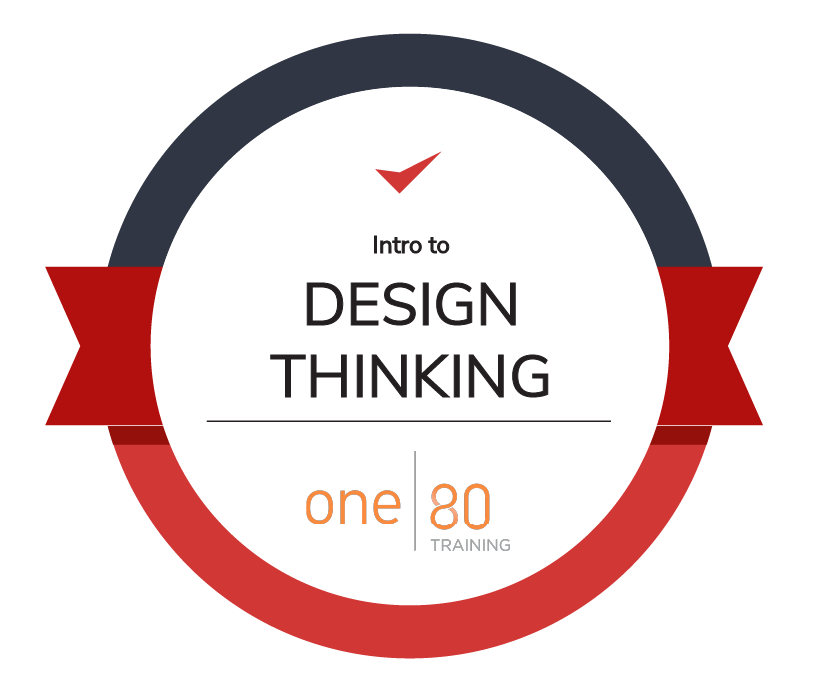Intro to Design Thinking
Why Design Thinking
Design Thinking is a user-centered approach to innovation that combines empathy, creativity, and rationality to solve complex problems and create impactful solutions. By placing the user at the center of the process, organizations can gain a profound understanding of customer needs and preferences, leading to products and services that truly resonate.
Companies like Apple, Google, and IBM have embraced Design Thinking to drive innovation, improve customer satisfaction, and achieve competitive advantages. Studies show that organizations using Design Thinking see a 300% ROI on innovation initiatives and significantly higher customer loyalty scores.
This methodology fosters collaboration, rapid prototyping, and iterative testing, enabling teams to quickly pivot and refine solutions in today’s dynamic business environment.
The claim that organizations implementing Design Thinking achieve a 300% return on investment (ROI)
in innovation
initiatives is supported by several studies:
A Forrester Consulting study commissioned by IBM found that IBM's Design Thinking practice led to a
300% ROI, a 2x
faster time to market, and a 75% increase in team efficiency.
ExperiencePoint reports that design thinking projects can deliver a 300% ROI, highlighting
significant time and cost
savings, increased portfolio profitability, and unmistakable ROI.

Description
Discover how to unlock the power of human-centered design in our immersive "Intro to Design Thinking" workshop. Over two action-packed days, this class takes you through the full spectrum of the Design Thinking process—Discovery, Define, Ideate, Prototype, and Test. You’ll engage in hands-on labs, leveraging tools like Mural or Miro, and work collaboratively in small teams to tackle real-world challenges.
This workshop equips you with the skills to deeply understand user needs, craft innovative solutions, and validate ideas through rapid prototyping and testing. Whether designing a new product, improving a service, or solving organizational challenges, this class will transform how you think and approach problems.
- Enhanced Creativity: Learn proven techniques to generate and test innovative ideas.
- Practical Tools: Master industry-standard tools like empathy maps, creative matrices, and A/B testing.
- User-Centered Approach: Understand how to create solutions that meet user needs and delight and engage them.
- Strategic Insight: Gain a framework to navigate uncertainty, reduce risk, and deliver measurable value.
Objectives
- Cultivate User Empathy: Develop deep user understanding to inform design choices.
- Apply Design Thinking: Master the application of Design Thinking for innovative problem-solving.
- Human-Centered Design Principles: Learn principles of User-Centered Design to ensure product relevance.
- Measure Customer Value: Acquire techniques to enhance customer empathy and value measurement.
- Navigate Design Phases: Guide projects through the Discovery, Define, Ideate, Prototype, Test, and Develop phases.
- Foster Creative Solutions: Stimulate creativity to generate various product solutions.
- Prototyping and Testing: Build, refine, and validate prototypes to meet user needs.
Outline
- Grasp the principles of the Design Thinking process and its empirical, user-centered approach.
- Explore the phases: Discovery, Define, Ideate, Prototype, Test.
- Distinguish between outcomes and outputs to ensure value-driven innovation.
- Understand the current state of your product or service.
- Develop skills for in-depth interviewing and asking the right questions.
- Lab/Tool: Empathy Maps, Interviewing, Contextual Inquiries.
- Set up observational studies to gather actionable insights.
- Map the customer journey and conduct competitor analysis.
- Differentiate between outcomes and outputs to focus on solving meaningful problems.
- Define problems effectively and clearly.
- Lab/Tool: Abstraction Ladder, Stakeholder Mapping.
- Understand the concept of value realization and its implications on product development.
- Apply advanced brainstorming and ideation techniques to uncover creative solutions.
- Lab/Tool: Creative Matrix, Alternative Worlds.
- Develop and evaluate potential solutions for defined problems.
- Explore the "What Wows" concept to create innovative product and service ideas.
- Understand the fundamentals of iterative prototyping and its role in refining concepts.
- Lab/Tool: Rough & Ready Prototyping, A/B Testing.
- Test assumptions and incorporate user feedback into the product development process.
- Evaluate product feasibility from business and technological perspectives.
- Lab/Tool: Rose, Thorn, Bud; Affinity Clustering; Importance/Difficulty Matrix.
- Apply testing results to refine and improve your prototypes.
- Integrate Design Thinking into your organization’s innovation practices.
- Collaboratively build an actionable plan to apply the learned techniques.
- Discuss real-world applications of Design Thinking across industries.
Who Should Attend
- Designers
- Product Managers
- Business Leaders
- Innovation Managers
- Entrepreneurs
- Project Managers
- Anyone looking to enhance their problem-solving skills





